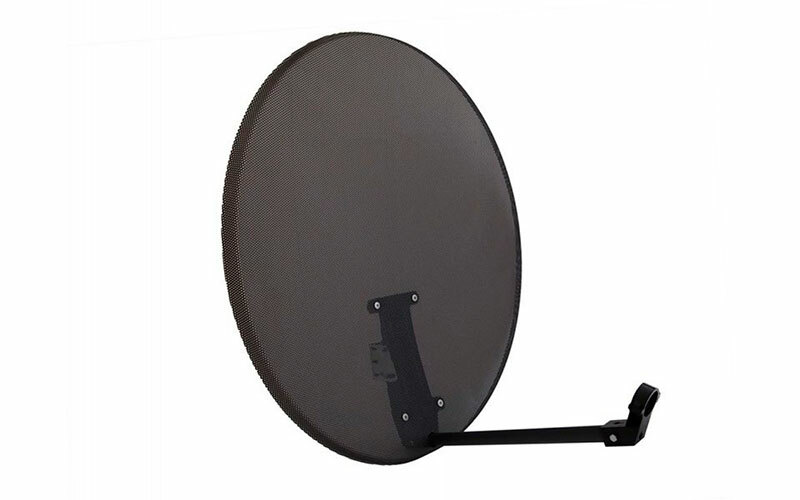Japanese style in the interior, despite its obvious minimalism in the choice of materials and pictorial means, is extremely popular in the design of housing the elite category. Spacious apartments, lofts, Scandinavian, European, oriental style, built on the principle of open space need to be careful zoning.
Japanese curtains - it's functionality and elegance.
Japanese curtains and walls help to identify functional areas, without interfering with the home architecture. They leave open the possibility at any time to change the proportions and combine space. Make these curtains can be their own hands, without spending a lot of time and effort.
They confidently be called exotic decor element, which came to us from the rising sun.
Content
- 1 Briefly about the Japanese curtains and partitions, design features
-
2 How to sew a Japanese curtains with his hands
- 2.1 Drawing and pattern of Japanese curtains
- 2.2 How to sew curtains, instructions with photos
- 3 Photo printing on Japanese curtains
- 4 The division of the Japanese room curtains
- 5 The best examples of application and photo Japanese curtains and partitions in the interior
- 6 VIDEO: A variety of Japanese curtains in the interiors.
- 7 50 photos of modern Japanese curtains in the interior:
Briefly about the Japanese curtains and partitions, design features
The basic principle, which governs the lungs Japanese partitions - simple lines, low-key colors, tastefully decorated. They are used not only for the design of window openings, and to create a partition in a room, decorating the arches, passageways.
By design, they are similar to vertical blinds.
All curtain consists of separate interconnected panels, which can be from 2 to 5, sometimes more. Each part has a rectangular shape, the width is not more than 1 meter, length - from floor to ceiling. In some cases it can be reduced as necessary to the level of the sill.
Each panel is reinforced frame and cloth on it straightened and has no folds or drapery.
Such blinds mounted on the ledge with several rails, the number of which coincides with the number of panels and fold it. Each is on its guide and freely moves to the side. Japanese curtains can be assembled to one panel width, as a foldable mobile partition. Popular hanging ladder or cascade.
Japanese curtains consist of fabric panels with special weighting the bottom webs, which move along the ledge with the help of different types of management.
Japanese walls look good on the big "French windows" to the floor, on the wide window openings. They are used on a large kitchen to separate the working space from the eating area or to separate kitchen and dining room with an open principle, the apartment buildings.
Japanese curtains are easy to operate and maintain.
Pros Japanese curtains are in their mobility, ergonomics, ease of care. Such panels do not collect dust, since they do not have folds and assemblies. Typically, the natural tissue may be dust repellent and antistatic processed impregnations.
A special mount allows to use them not only as a decoration for the window opening, but also as a partition to divide the room.
As the design is very convenient to use the photo printing, creating a real painting. To control is used as the simplest manual and industrial electrical systems. Change the curtains on the new ones can be as often as you'd like owner.
Due to the design of several panels can be combined in any order canvas and create a stylish and interesting images.
How to sew a Japanese curtains with his hands
Due to their simple design and intuitive operating principles of Japanese curtains and walls can make your own. Choose fabric with a simple structure, focuses on the structure and pattern. Convenient Plain fabric or fotoprint.
Thanks to its understated appearance curtains occupy a minimum of space.
There is a drawing of perforation technology allows inject more light transmitting ability is required if the partition as easy as possible. This is convenient when the kitchen sink and separate the plate from the table.
Lightweight translucent fabric hides unnecessary details, but allows enough light.
Materials used as a light, translucent, and the dense, heavy, does not transmit light. Among the tissues in the first place traditional:
- linen;
- cotton;
- Japanese traditions - silk;
- jute;
- bamboo;
- imitation rice paper;
- Budget - plastic.
artificial and natural materials are used to manufacture Japanese webs.
For self-tailoring tools required - the machine, thread, needles, scissors, guide and weights for each size Panel in accordance with their number, the ledge with several guides for fixing accessories cornice and hooks for hanging curtains.
It is convenient to buy ready-made cornice, but you can adjust your own profile.
Drawing and pattern of Japanese curtains
Starting work on the Japanese panels, it is necessary to calculate the amount of material. Conventionally, the width of each band - 60 cm, but all depends on the proportions of a particular room. The length is the distance from the eaves to the floor, that is the height of the room plus 10 cm on the allowances. If the partition is located on the width of the room, the number of panels is calculated according to the formula width divided by 60. Based on these data (number of bands, their length and width) is determined by the total amount of material.
Do not forget to allowances for processing the edges.
Important! If the number of turns in the calculation of a fraction, it is rounded, as the easiest way to adjust the size changing value hems.
Pay attention to the width of the fabric. On sale are the most common fabric of 100 cm. If you choose to 140-150 cm, the one cut on the longer get two finished paintings. Similarly calculated length of the guides (room height minus 5 cm) and a width weighting (the width of each curtain - 60 cm). Their number - two guides on the one sheet 1 and the weighting agent.
Special weighting for Japanese curtains.
How to sew curtains, instructions with photos
Japanese sewing of curtains is quite simple, the main difficulty lies in the great length of seams, so the manual processing is undesirable, it is better to use a sewing machine. How to make Japanese curtains with his hands step by step guide will show in detail. Remember that if the fabric is able to shrink, before cutting it is necessary to moisten and ironed, the curtains did not sit in the first wash.
Japanese panels are only a short or long on the floor, all other forms are excluded.
Important! When cutting please follow the direction of the warp yarn to fabric to curtains not tilt.
- When the cutting is completed, the first processed sides paintings. Do not pull on the line, the fabric does not frown. After completing this step, proutyuzhte good stuff, because after do this would be difficult. Remember to leave an opening into which will be inserted into the guide.
- The second stage nastrachivaetsya upper edge. It must be designed so as to sew thereto rings or special hooks for threading into the guides. Special-loop hooks are sold in the department, near the Department of curtain rods and rails for curtains.
- Light fabrics can be fastened to the Velcro tape, whereas the upper edge of the canvas sewed one part of the tape, and the ledge is adhered glue or tape mounting a second side of the tape.
Japanese curtains can be as decoration element for windows, and the perfect solution in the design of niches, walls and doorways.
- You can use guides, hanging from the eaves on the principle of conventional curtain hooks.
- At the end of zastrachivaetsya bottom edge. All hems are performed in width from 5 cm to be able to thread the inside of the structural elements, in this case - weighting.
- Japanese hanging curtains is performed in an extended condition, it's best to use a cornice bus.
Do not forget to lay up a long pole to move the curtains, when they are ready.
Photo printing on Japanese curtains
The most original way, is entirely consistent with the traditions of their native country - printing. It can be easily ordered from the copy center or via the Internet.
When printing on canvas is patterned by the customer or company directory.
The Japanese motives fotoprint dominated by flowers, birds and landscapes in watercolor style. However, do not look less attractive and ordinary photos. Printing is applied to several webs (so creates a single panel) or only to the center.
It may be a picture of nature, abstract paintings, reproductions.
The best method of applying fotoprint - sublimation method. The basis of the names put characteristic of the ink used - freeze. The paint does not come out, or printed on the fabric and evaporates from the tracing paper on the product when heated.
This avoids inaccuracies in the transfer pattern to obtain excellent image quality.
Important! Graininess, sharpness of pattern, color and other characteristics dependent on the quality of the provided material with an image file format, the number of pixels and size.
The division of the Japanese room curtains
Japanese panels are very often used for zoning room. The most popular place to put them - the kitchen. Overall, this is fully consistent with the way these walls since ancient times been used for decorating the home in Japan.
Since nothing has changed, as the main advantage of this method - the ease and mobility.
That is why so love to hang Japanese blinds in the kitchen, separating the part of the room where you can sit quietly, talk, eat, or relax with a cup of tea.
This is a stylish solution that can be quickly changed by moving the ledge to a new location.
The preferred if the room there is a structural element that reinforces the impression of the curtain. This can be arch, ceiling beams, columns, which are often found in the studio apartment. Despite the fact that the original Japanese partitions often used in large-area halls, they look great in small rooms.
In this case, the selected light translucent fabric.
The best examples of application and photo Japanese curtains and partitions in the interior
Recommendations stylists declare that Japanese design is basically using environmentally friendly, natural, naturalness. Best photos are interiors in shades of sky, grass and water. This diluted shades of green, pistachio, mint shades, camel, beige gamut, vanilla, pink and blue tones, blue, gray and silver color.
Japanese curtains provide unlimited freedom in the design of any room.
Harmony - that brings to the interior partition in a Japanese style. They give the lightness, the volume of the space, do not shade the room. To spice up the costs to use more saturated orange tones, lemon, red, green.
You can combine bright and more saturated colors, transparent and dense texture.



